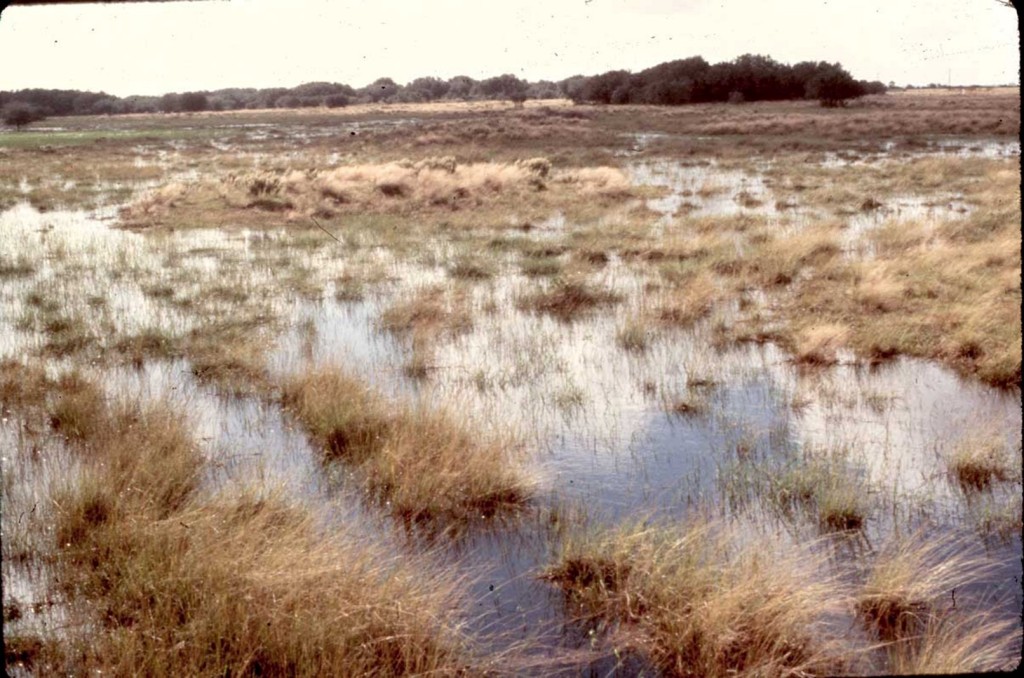The Gulf Coast Plain is characterized by prairies laced with bayous and rivers flowing toward the Gulf of Mexico. Along the coast, barrier islands and estuarine salt grass marshes protected the inland from storm damage and served as nurseries for birds, fish and crustaceans. Low-lying bottomland along rivers and bayous developed rare woodland ecosystems, while tallgrass prairies, pothole wetlands, and oak groves dominated upland areas.
Prairie pothole wetlands once covered vast expanses (about 25% to 30%) of the Texas coastal prairie. These shallow dish-shaped depressions regularly dry out but have typical hydric wetland soils.
Prairie potholes often occur in complexes with pimple mounds. Pimple, or mima, mounds are slightly upraised ridges or hillocks about 2’ high. These mounds are thought to be a relic of ancient rivers and bayous, modified over thousands of years by climatic (especially wind) and biotic forces. Because of their distinct soil chemistry, a unique set of plants colonize the mounds.
Pimple mound complexes are rare now and are an irreplaceable geological legacy. Much of the prairie pothole-pimple mound complex was leveled and converted to agriculture in the last century. Now, population growth from the Houston-Galveston metroplex is leading to rapid urbanization in this ecoregion.
Remainders of the prairie pothole ecosystem are critical habitat for migrating birds and native coastal wildlife. Conservation of this habitat is needed before it disappears forever.

Prairie potholes in the winter in Matagorda. The raised mound in the center is a pimple mound. © John Jacob, TCWP, www.texaswetlands.org

